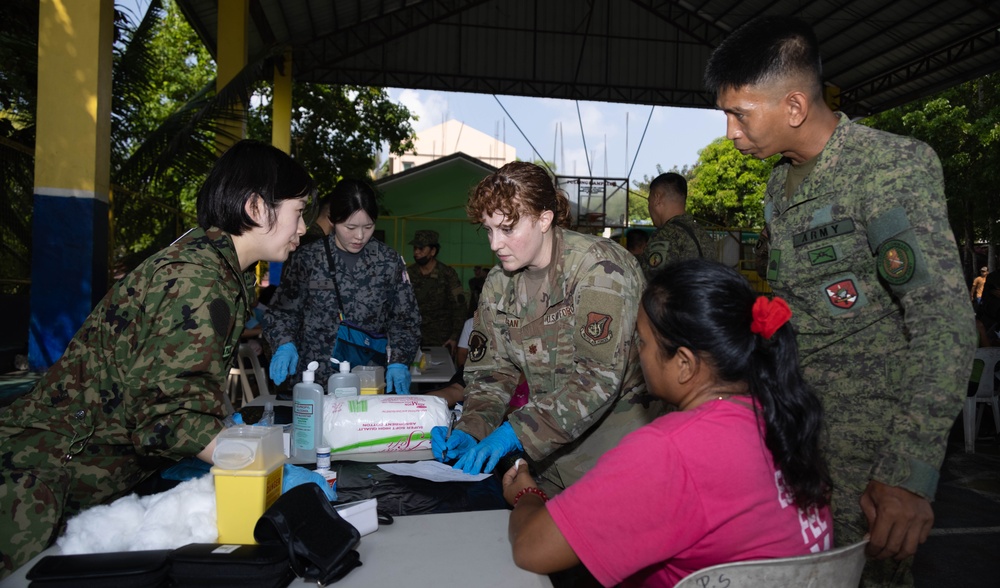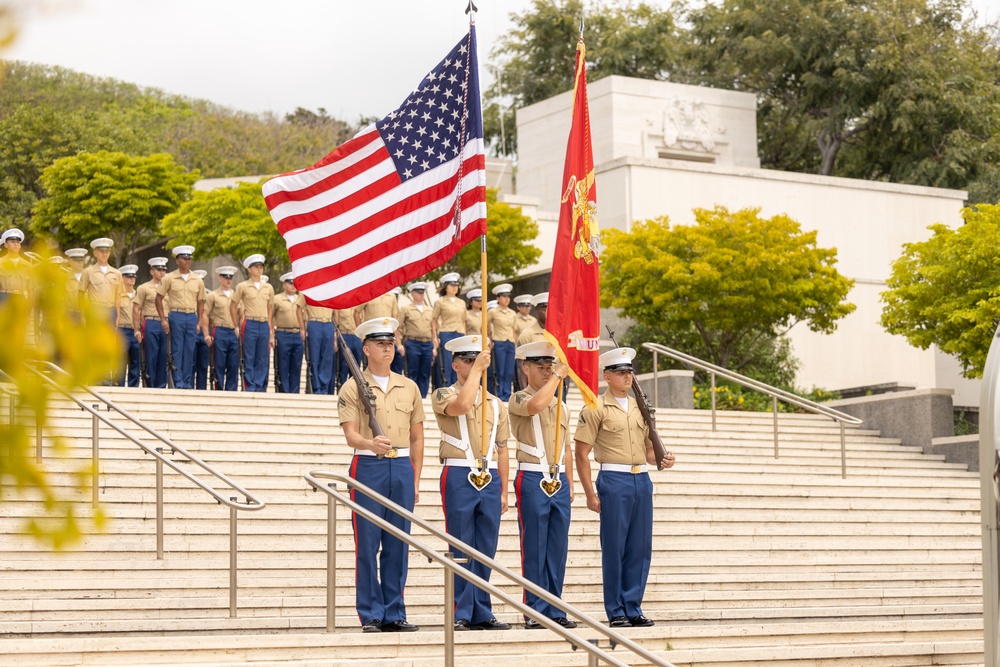DVIDS – News – USARIEM Data Scientist Receives Federal Laboratory Consortium Excellence in Technology Transfer Award
By Maddi Langweil, USARIEM Public Affairs
Every year, the Federal Laboratory Consortium, or FLC, grants the Excellence in Technology Transfer (T2) award to Federal research teams who bring their lab innovations to the commercial space by partnering with external businesses and universities to advance society. This year the Excellence in T2 award was presented to the U.S. Army Medical Research and Development Command (USAMRDC) Medical Technology Transfer (MTT) team for the Estimated Core Temperature (ECTemp)/Individual Heat Acclimation Training Tool (iHATT) invention.
Nearly every Warfighter has a tale of witnessing a fellow Soldier, squad member or even themselves exhibit signs of confusion or instability before collapsing while training in hot and/or humid environments. These signs can lead to life-threatening illnesses like heat stroke or even death, which the ECTemp/iHATT aims to reduce and prevent.
ECTemp/iHATT is a life-saving package designed to analyze the human body’s core temperature and use this to safely guide Soldiers through an individualized acclimatization program to improve their readiness out in hot or humid conditions.
Alone, ECTemp is a sensor-based technology developed by Dr. Mark Buller, data scientist for the Thermal and Mountain Medicine Division (TMMD) at the U.S. Army Research Institute of Environmental Medicine (USARIEM), that can identify signs of exertional heat stress or illness by predicting an individual’s core body temperature from changes in their heart rate. Its counterpart, iHATT, developed in conjunction with Dr. Simon Delves, thermal physiologist at the Royal Navy Institute of Naval Medicine in the United Kingdom, uses the data from the algorithm to create personalized trainings and instant feedback from a smartphone app.
“We built these algorithms to help Warfighters avoid heat illness and reduce their risks while improving their readiness as they go into trainings,” Buller said.
Launching a new solution
Basic combat training, field training and road marches are routine physical military activities that can be intense and pose potential health risks. As a result, the U.S. Army Public Health Center (APHC) says there are about two to three Solider deaths and 1,000 Soldiers who need medical attention every year from life-threatening illnesses.
Various practices such as thermometers, skin sensors, or ingestible pill thermometers can aid at-risk Warfighters but can be costly and hard to manage. As an alternative to these methods that is just as effective, yet inexpensive, Buller and Delves joined forces to develop a solution.
It was an ultimate solution that stemmed from to the creation of ECTemp which was conceived during Buller’s time in the Department of Defense’s Science, Mathematics, and Research for Transformation Program. While iHATT was initially sketched out on a plain napkin in a hotel lobby with Delves.
“Once we applied Dr. Delves’ expertise in heat acclimation and mine in computational physiology, we tested our invention in the jungles of northern Borneo with jungle instructors from the U.K. Jungle Warfare Division in 2017,” Buller said.
The two inventors launched their device for more testing, specifically with the U.S. Army and the U.K. Ministry of Defense. This then caught the attention of the Royal Netherlands Army, which led to a licensing agreement between the USAMRDC MTT and the Netherlands in 2021. The software was issued on 1,500 Garmin smartwatches for military use.
“These wearable solutions are a product of uniquely bringing together both quantitative and physiology expertise to improve sensitivity and specificity of devices overtime,” said Nisha Charkoudian, Division Chief for TMMD. “It is really important to not just have a device but to really understand the physiological basis for that device or wearable.”
The device is available in two languages: Dutch and English and is approved to be used in three countries: U.S., U.K. and the Netherlands. The wearable aims to be a catalyst to reducing and preventing Warfighter risks and injuries from heat and humid conditions.
While the Dutch are the first to use the innovation on a mass scale, ECTemp/iHATT will soon be available to be purchased by the public in the future.
Fostering physiology and technology innovations
With the unique opportunity to provide individuals immediate and personalized feedback on any device, ECTemp/iHATT has evolved to be a licensable technology beyond their collaboration with the Netherlands.
To expediate these commercialization efforts, Ellen Fletcher-Goetz, USARIEM Office of Research & Technology Applications, swiftly worked with a large team across the Atlantic in the U.K., USAMRDC, USARIEM, and led a team of two to obtain a utility patent for the technology.
“We were a team of scientists and group of tech transfer professionals who used cross-border collaboration and creative thinking to manage intellectual property owned singly and jointly,” said Fletcher-Goez. “We developed international work agreements, joint intellectual property agreements and issued third nation licensing.”
What began as a seed of curiosity, ECTemp/iHATT grew and reached new heights after going through licensing efforts, custom agreements and the U.S. Patent and Trade Office to end up in the commercial space.
Recently, these efforts were acknowledged by the FLC Technology Transfer Award for 2023. The USAMRDC MTT, to include USARIEM, was one of the four DOD research institutions that received this prestigious award.
“A lot of the physiology that we care about relative to the wearables are connected to where USARIEM has multiple subject matter experts in this area,” said Charkoudian. “It is helping everyone’s program to bring together these joint ideas.”
After an exciting and smooth process, Buller says he feels honored to receive the T2 award and have it been supported by a big team behind the scenes. Dr. Paul Michaels, Director of USAMRDC MTT, noted that “this was one of the best examples of teamwork across multiple organizations that I’ve seen during my tenure as Director of Medical Technology Transfer.
With plans to continue and foster new collaborations, Buller and Delves are working on additional modifications to the life-saving package. This joint invention will be an application that measures personal risk scores for heat injury that will continue the mission to reduce and prevent injuries and deaths caused by heat and/or humid environments.
“Overall, ECTemp/iHATT is the initial foundation and scientific basis for health-based algorithms,” Buller said. “It is pioneering the way for the combination of good scientific algorithms to be the basis for readiness.”
USARIEM is a subordinate command of the U.S. Army Medical Research and Development Command under the Army Futures Command. USARIEM is internationally recognized as the DOD’s premier laboratory for Warfighter health and performance research and focuses on environmental medicine, physiology, physical and cognitive performance, and nutrition research. Located at the Natick Soldier Systems Center in Natick, Massachusetts, USARIEM’s mission is to optimize Warfighter health and performance through biomedical research.
| Date Taken: | 04.14.2023 |
| Date Posted: | 04.14.2023 14:08 |
| Story ID: | 442656 |
| Location: | NATICK, MA, US |
| Web Views: | 21 |
| Downloads: | 0 |
PUBLIC DOMAIN

This work, USARIEM Data Scientist Receives Federal Laboratory Consortium Excellence in Technology Transfer Award, by Carey Phillips, identified by DVIDS, must comply with the restrictions shown on https://www.dvidshub.net/about/copyright.


 Private Internet Access gives you unparalleled access to thousands
of next-gen servers in over 83 countries and each US state. Your
VPN experience will always be fast, smooth, and reliable.
Private Internet Access gives you unparalleled access to thousands
of next-gen servers in over 83 countries and each US state. Your
VPN experience will always be fast, smooth, and reliable.
